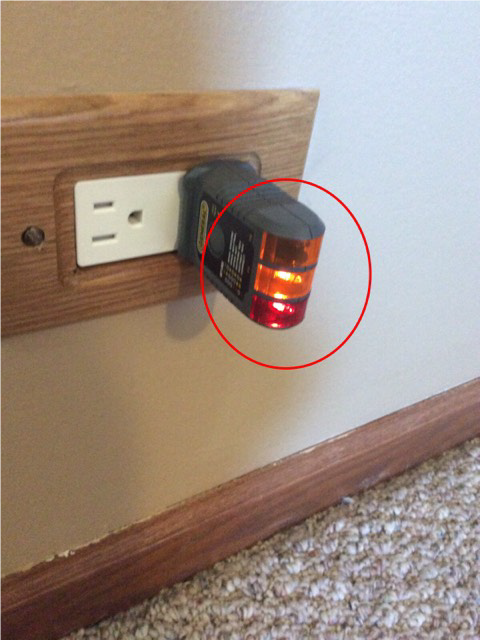

If they are in different positions the motor rotates left or right. If the polarity were reversed and the switch on the device were turned off - it would be interrupting the grounded (neutral) wire. If both are down, the motor is shorted to battery -, while battery + is floating. If both relays are up, as drawn, the motor is shorted to the battery +, while the battery - is disconnected. Your motor can be shorted, but that's the main point, that's how you turn it off (and also put the brake on).

You must locate where the wires were crossed in order to restore correct polarity. You should test all electrical outlets for reverse polarity using an outlet tester. This crossing results in a potentially dangerous reversed electrical flow. If you carefully trace all the possible connections with these relays you will see that your battery cannot be shorted. Reverse polarity is caused hot and neutral wires are crossed. Simulate this circuit – Schematic created using CircuitLab With a polarity tester and the accompanying voltage chart, you can test the polarity of an outlet in a few minutes. To make sure people coming by later understand what we're all on about, I shall redraw your originally posted schematic, followed by my original answer: Fortunately, testing for reverse polarity is simple. Or it was by accident, but the result is very much the same: Their design is safe, because only the motor can ever be shorted, while your new schematic isn't safe, because the supply can be shorted.

Because the designer of that circuit had thought ahead about the implications of production margins. This is why the schematic you posted earlier, with the relays connected the other way around, with the motor at the centretaps, is the way it is. It may be unlikely if the relays are exactly the same, but it is a very real risk, at any point in time. Yes, in your schematic, at any point, out of the box or "aged" you can potentially be shorting the battery at every single switch over.


 0 kommentar(er)
0 kommentar(er)
